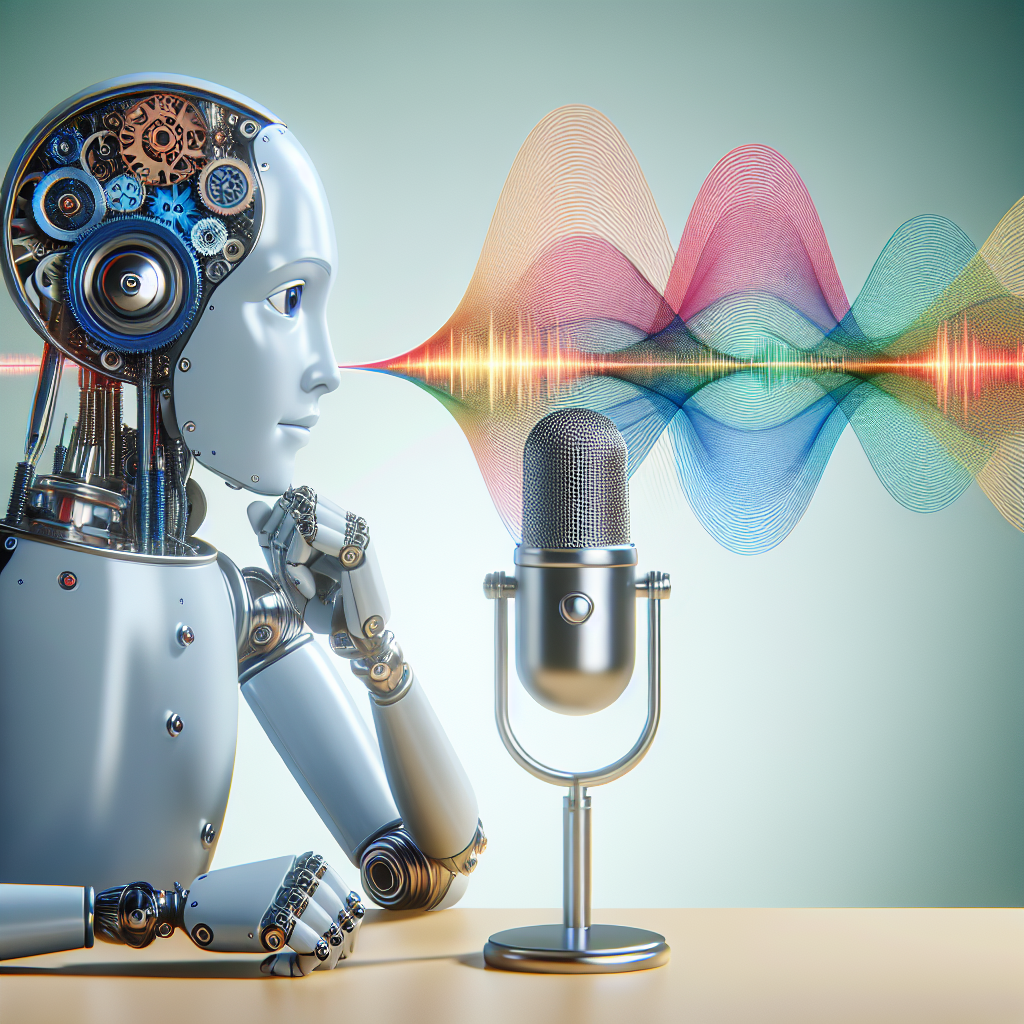The Role of AI in Speech Recognition
Speech recognition technology has come a long way in recent years, thanks in large part to the advancements in artificial intelligence (AI). AI has played a crucial role in improving the accuracy and efficiency of speech recognition systems, making them more versatile and user-friendly. In this article, we will explore the role of AI in speech recognition and how it has revolutionized the way we interact with technology.
What is Speech Recognition?
Speech recognition, also known as automatic speech recognition (ASR) or speech-to-text conversion, is the process of converting spoken words into text. This technology allows users to communicate with devices and systems using their voice, eliminating the need for typing or manual input. Speech recognition systems can be found in a wide range of applications, from virtual assistants like Siri and Google Assistant to transcription services and voice-controlled devices.
How Does Speech Recognition Work?
Speech recognition systems use a combination of hardware and software to convert spoken words into text. The process typically involves the following steps:
1. Audio Input: The system captures the audio input, usually through a microphone or a telephone line.
2. Preprocessing: The audio input is preprocessed to remove background noise and enhance the quality of the speech signal.
3. Feature Extraction: The system extracts acoustic features from the speech signal, such as pitch, intensity, and duration.
4. Pattern Matching: The extracted features are compared against a database of known speech patterns to identify the spoken words.
5. Language Modeling: The system uses language models to predict the most likely words or phrases based on the context of the conversation.
6. Output: The recognized text is generated and can be displayed on the screen, stored in a database, or used for further processing.
The Role of AI in Speech Recognition
AI has revolutionized speech recognition technology by enabling systems to learn and adapt to new speech patterns and languages. Traditional speech recognition systems relied on predefined rules and patterns to recognize words, which limited their accuracy and flexibility. AI-powered speech recognition systems, on the other hand, use machine learning algorithms to analyze vast amounts of data and improve their performance over time.
One of the key advantages of using AI in speech recognition is its ability to handle natural language processing (NLP) tasks. NLP involves understanding and interpreting human language, including grammar, semantics, and context. AI-powered speech recognition systems can analyze the structure of sentences, identify keywords, and infer the meaning of spoken words, making them more accurate and reliable.
Another benefit of AI in speech recognition is its adaptability to different accents, dialects, and languages. Traditional speech recognition systems struggled to recognize non-standard speech patterns, leading to errors and misunderstandings. AI-powered systems can learn from diverse data sources and adapt to individual speech characteristics, improving their performance across a wide range of users.
AI also enables speech recognition systems to provide more personalized and context-aware interactions. By analyzing user preferences, behavior, and history, AI can tailor the responses and recommendations to each individual, creating a more engaging and intuitive user experience. This level of personalization is especially valuable in applications like virtual assistants, customer service bots, and smart home devices.
FAQs
Q: How accurate are AI-powered speech recognition systems?
A: AI-powered speech recognition systems can achieve high levels of accuracy, with some systems boasting over 95% accuracy in recognizing spoken words. The accuracy of the system can vary depending on factors like the quality of the audio input, the complexity of the language, and the training data used to train the AI algorithms.
Q: Can AI recognize different languages and accents?
A: Yes, AI-powered speech recognition systems are capable of recognizing a wide range of languages, accents, and dialects. The systems use machine learning algorithms to adapt to different speech patterns and improve their performance over time. However, some systems may be more accurate in recognizing certain languages or accents than others, depending on the training data and algorithms used.
Q: How secure are AI-powered speech recognition systems?
A: Security is a critical consideration when using AI-powered speech recognition systems, especially in sensitive applications like banking, healthcare, and government services. To ensure data privacy and protection, organizations should implement robust security measures, such as encryption, authentication, and access controls. Additionally, users should be cautious about sharing sensitive information through speech recognition systems and verify the security measures in place.
Q: What are the limitations of AI in speech recognition?
A: While AI has significantly improved the accuracy and performance of speech recognition systems, there are still some limitations to consider. For example, AI-powered systems may struggle with recognizing speech in noisy environments, understanding complex or ambiguous phrases, or differentiating between similar-sounding words. Additionally, AI systems may be susceptible to biases in the training data, leading to errors or inaccuracies in the recognition process.
In conclusion, AI has played a crucial role in advancing speech recognition technology, making it more accurate, versatile, and user-friendly. By leveraging machine learning algorithms and natural language processing techniques, AI-powered speech recognition systems can understand and interpret spoken words with high accuracy and efficiency. As the technology continues to evolve, we can expect to see even more innovative applications and capabilities in speech recognition, transforming the way we interact with technology and improving the accessibility of communication for all users.

